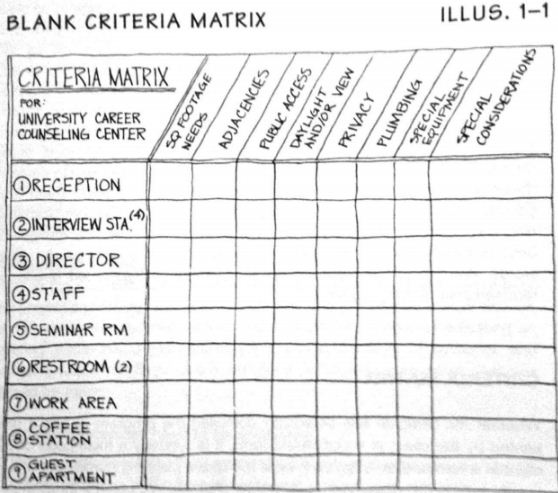| University | Yorkville University |
| Subject | DIDS116: Space Planning Project |
Objectives:
- To apply information gathering methods introduced earlier in the term as a means of identifying relevant design issues for this project
- To analyze programming documents, generating visual summaries of their contents
- To produce multiple schematic diagrams as a form of preliminary space planning
- To compose a cohesive design concept that responds to programmatic requirements
- To evaluate how the fundamental building blocks of space planning influence the design solution
Hire a Professional Essay & Assignment Writer for completing your Academic Assessments
Native Singapore Writers Team
- 100% Plagiarism-Free Essay
- Highest Satisfaction Rate
- Free Revision
- On-Time Delivery
HOTEL LOBBY
This boutique hotel is located in the heart of downtown Toronto and has been designated a TorontoHeritage Property. The hotel is geared to travelers who desire the convenience of a great location in the heart of Toronto and is close to all the amenities and attractions. The hotel was recently purchased and the new owners would like to begin renovations and reimaging of the hotel starting with the Ground Floor. The clients are looking to update the look of the hotel as well as bring it to today’s building codes and standards. The Ground Floor is 2,550 SF/237sm.
Program Requirements
1. Lobby: 90 sq. m/ 970 sf Must be adjacent to the main entry door and have access to daylight and views of the exterior
2. Reception Desk / Check‐In: Must be located within the Lobby and be in close proximity and have direct visibility to the lobby doors.Will be where all guests and visitors are welcomed.
3. Lounge Area Seating: Must be located within the Lobby. Seating for at least 6 ‐ 8 guests with an area for beverage service requested but is not required
4. Luggage Storage: Must be located within the Lobby. For storing guests luggage, packages, etc. must be reasonably close to the front reception desk.
5. Concierge Desk: A secondary small desk in the lobby is requested but is not required
6. Hotel Manager Office: 9.29 sq. m/ 100 acoustical privacy required located in close proximity to the reception desk and Lobby area but is not required to be adjacent to it.Not typically accessed by hotel guests.
7. One Male/Female Public Universal Washroom: 7.5 sq. m/ 81 should be convenient to the Lobby
8. Accessible Guest Suite: 30 sq. m/ 322 sf One universally accessible guest suite is required to be available on the main floor for guests.Should have privacy from the Lobby but within close proximity to accessible emergency exits. A second guest room is requested but not required.
Description:
In this final project, students will execute a space planning methodology in order to create a preliminary condo lobby design. Students are expected to conduct spatial analysis and ethnographic observations of two lobby environments.
They will utilize the information gathered through this activity as well as the given program requirements to create a criteria matrix, inspiration board, bubble diagrams, and multiple space plan options in the form of block diagrams. Additionally, they will submit a written summary that discusses how the fundamental building blocks of space planning introduced in the first half of the term impacted their design decisions.
Materials Required:
- Sketchbook and/or pad of quad (grid) paper
- Trace paper
- Assorted pens, pencils, and markers for sketching
- Digital or phone camera
- Architectural scale
- Adobe Photoshop, Adobe InDesign, or Microsoft PowerPoint for
formatting
PART ONE: CONDUCT OBSERVATIONS OF TWO LOBBY ENVIRONMENTS
In order to better understand the relevant design issues for a condo lobby, select two lobby environments for analysis; at least one must be a condo lobby, but the other can be a hotel or commercial lobby environment. Make sure you have permission to perform observations and that it is used by at least 3‐5 people during your period of observation.
By now you should be familiar with the steps required for conducting spatial analysis and ethnographic observations. Review Section 1 of Assignment 1 and Section 1 of Assignment 3 for reference. At a minimum, each set of observations should include:
- An annotated floor plan
- Additional annotated sketches (and photographs, if permissible) to document key architectural features that may impact human behavior,such as: How are the spaces organized in terms of adjacency, level of openness, and proportion? What are the clear pathways and points of access? Is furniture arranged in a way that suggests a certain activity or interaction level? What about windows, including views and light?
- Notes and diagrams on how people interacted with their environment, including information on circulation; function; interaction; spatial features; and universal design
Format your observations and analysis so that the information is grouped by space; label accordingly. For each space, be sure to include a list of the key issues and criteria discovered that should be considered when designing a condo lobby
PART TWO: STUDY & VISUALLY SYNTHESIZE PROGRAMMING REQUIREMENTS (CRITERIA MATRIX)
Review the program document provided; look up any terms you are unfamiliar with and make notes for yourself as needed. Also, consider the required spaces listed here as they relate to your observations of other lobby environments.
Develop a criteria matrix using architectural handwriting, per Lesson 8’s lecture and the example below (from pgs. 13‐14 of your Kaplan textbook). As you create the matrix, remember the following:
- List all required rooms/areas provided by the program in the left column.
- Fill in the keyspace planning criteria across the top; at a minimum, this must include all categories given in the textbook example.
- Create a table legend that includes: “high,” “medium,” “low,” “yes,” “no/none,” and “important but not required.”
- With the design program as your guide, go through each room/area and plugin values for all criteria in order to document each space’s needs.
- The criteria matrix should offer a concise but comprehensive visual summary of your design program. Review it thoroughly to ensure that all critical information given in the program document is included.
Blank Criteria Matrix Template:

PART THREE: RELATIONSHIP (BUBBLE) DIAGRAMS
1. Create at least 3 relationship diagram options, using Unit 9’s lecture and the examples given below (from pgs. 30‐32 of your Kaplan textbook). Each of these diagrams should:
2. Include all programmatic components, and respond to the design criteria and adjacency issues outlined in your matrices.
3. Be created independently of any building shell—these are intended to be an abstract study of how program elements can relate to one another.
4. Use arrows to indicate the degree of adjacency between spaces; you can also callout needs such as acoustic privacy and access to natural light and/or view.
5. Respond to design constraints and opportunities identified in the analysis of other lobby environments.
6. Be part of an iterative process. After you create the first diagram, review it, and think about how it could be better. What are the gaps? Do you see alternate ways of arranging the spaces that might be more functional? Your second and third diagrams should provide improvements and alternates to the first
PART FOUR: BLOCK DIAGRAMS
7. While you are not required to do a full‐scale site and building analysis for this project, it’s still important to consider the opportunities and constraints of the space you are designing within so that you can space plan appropriately.
8. Make notes for yourself regarding:
i. Overallsquare footage & proportions
ii. Ceiling height
iii. Building’s orientation to the north
iv. Relevant issues of daylighting and views
v. Location of the entrance(s) and windows vi. Placement of elevator core, stairs, and other existing features to remain.
9. Extra consideration will be given to those students who submit thoughtfully documentation and analysis of the above contextual issues.
10. Create at least 3 block diagrams, using Unit 9’s lecture and the examples given below (from pgs. 44‐45 of your Kaplan textbook). Each of these
diagrams should:
11.Be created within an accurately sized floor plan, with all programmatic elements are drawn roughly to‐scale and in the basic shape, you’re considering.Use your matrices and strongest bubble diagram(s) as a guide for how spaces should relate to one another.
12. Respond to the building shell, with issues such as entry, window, core, column location, and orientation considered.
13. Include space for circulation, making it clear how users would get from one space to another. Use arrows to indicate primary and secondary travel paths.
14. Include room and area names as well as key annotations to convey your thought process. Don’t forget the north arrow.
15. Be part of an iterative process. This is about trial‐and‐error; each diagram should be an improvement on the previous. Take time to critically assess each diagram and reflect on potential issues that could be improved.
16. When making these diagrams, make sure you are considering key influencing factors, such as universal design, human factors, and codes/standards.
17. Select the block diagram that you think is strongest; label this as “Proposed Space Plan” and present it as the first block diagram when formatting.
PART FIVE: INSPIRATION BOARD
Using InDesign, PowerPoint, or similar layout software, create a page of images that shows a potential design direction for this condo lobby. The images should show a cohesive mood based on what you think would work for the proposed space plan, this client, and what you learned by observing other lobby spaces.
Thoughtfully arrange at least 10 images on the page; these can be specific design materials as well as more “inspirational” images that convey atmosphere. Include a title on the inspiration board that conveys the design concept.
PART SIX: WRITTEN COMPONENT
Write a one‐page summary (~500 words) analyzing your proposed space plan and concept board. Discuss the following:
- Why did you select the block plan you did—what makes is successful? And how does it relate to the concept images you compiled?
- How do you think users will feel in this space? Consider issues of human dimensions, spatial scale, and proxemics.
- How does your space support users of varying abilities? What principles of universal design did you employ?
- In what ways did design codes and standards influence your design solution?
- Finally, what did you learn by creating multiple block diagrams? How did different arrangements of programmatic requirements change the feel of the design? How might you refine the design further if you were creating a final floor plan?
Avail of the best help with interior design assignments from our professional writer. Interior design subject of balance, emphasis, contrast, rhythm. Singapore assignment help provides the best homework help to complete your DIDS116: Space Planning Project Assignment under your given deadline.
Looking for Plagiarism free Answers for your college/ university Assignments.
- NUR3015 Health and Social Policy Summative Assignment Report 2025/26 | SIT
- PS5009MKT Digital Business Assessment Coursework | Coventry University
- 5007MKT Marketing Insight Assignment Coursework 2 – Coffee Shop Industry | Coventry University
- HL3044 The Legends of King Arthur Assignment Semester 1, AY2025-26 | NTU
- AVM343 Airport Design and Planning ECA July Semester 2025 | SUSS
- ICT239 Web Application Development End-of-Course Assessment – July Semester 2025
- BX2091 Tourism & Leisure Management Assessment Task 3, 2026 | JCU
- Project on Probability and Statistics using Matlab Assignment | NUS
- Health Economics and Policy Assessment Essay | Teesside University London
- BCAF004 Management Accounting & Finance Individual Assignment 1 AY 2025/2026 | TP

